RI is known for dining excellence. For 50 years, Johnson & Wales has nurtured that status.
- Oops!Something went wrong.Please try again later.
- Oops!Something went wrong.Please try again later.
When Del's Lemonade created a new apple cider flavor for fall, a company spokesman credited two Johnson & Wales University interns from the College of Food Innovation & Technology with playing a key role in the development of the drink. They were using their food science education to advance the taste of Rhode Island's iconic frozen beverage.
Over the past two decades, when lists of "best chefs" are compiled, whether by the James Beard Foundation or national media companies, they've been stacked with JWU alums including Ben Sukle, Champe Speidel, Derek Wagner and Mariana Gonzalez-Trasvina.
Emeril Lagasse, JWU class of 1978, was the chef chosen to cook and entertain on the premiere episode when the TV Food Network launched in 1996.
As the culinary program celebrates its 50th anniversary, there is a strong case to be made that the Providence university helped transform the food landscape in Rhode Island.
In a state known for dining excellence, it's hard to ignore the JWU effect.
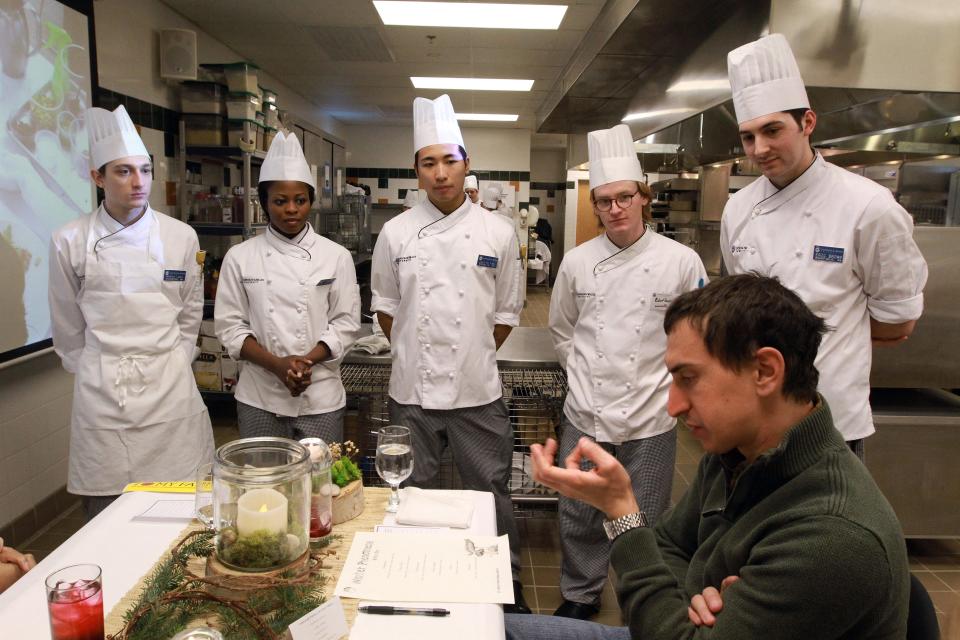
"Their graduates are the placemakers that drive tourism and economic development," said Lisa Raiola, president and founder of Hope & Main. In eight years, the Warren-based culinary incubator has helped launch more than 450 food businesses.
"Without a doubt, their alumni have defined what a successful entrepreneur looks like," Raiola said. They include the founders of meal delivery service Feast & Fettle (Maggie Mulvena Pearson), Aura's Chocolate Bar (Aura Fajardo Quintero) and Navad Bakers (Guy Hanuka), formerly Buns Bakery. "They now inspire the rising generation of culinary creators."
Having a culinary college brings something special to a city, said John Elkhay, Class of 1977. His Chow Fun Food Group has brought many cutting-edge restaurants to life over 25 years, including Ten Prime Steak & Sushi.
"There’s an influx of different culinary minds that often challenge the old guard to bring fresh ideas and techniques to our tables," he said.
How JWU became a culinary school
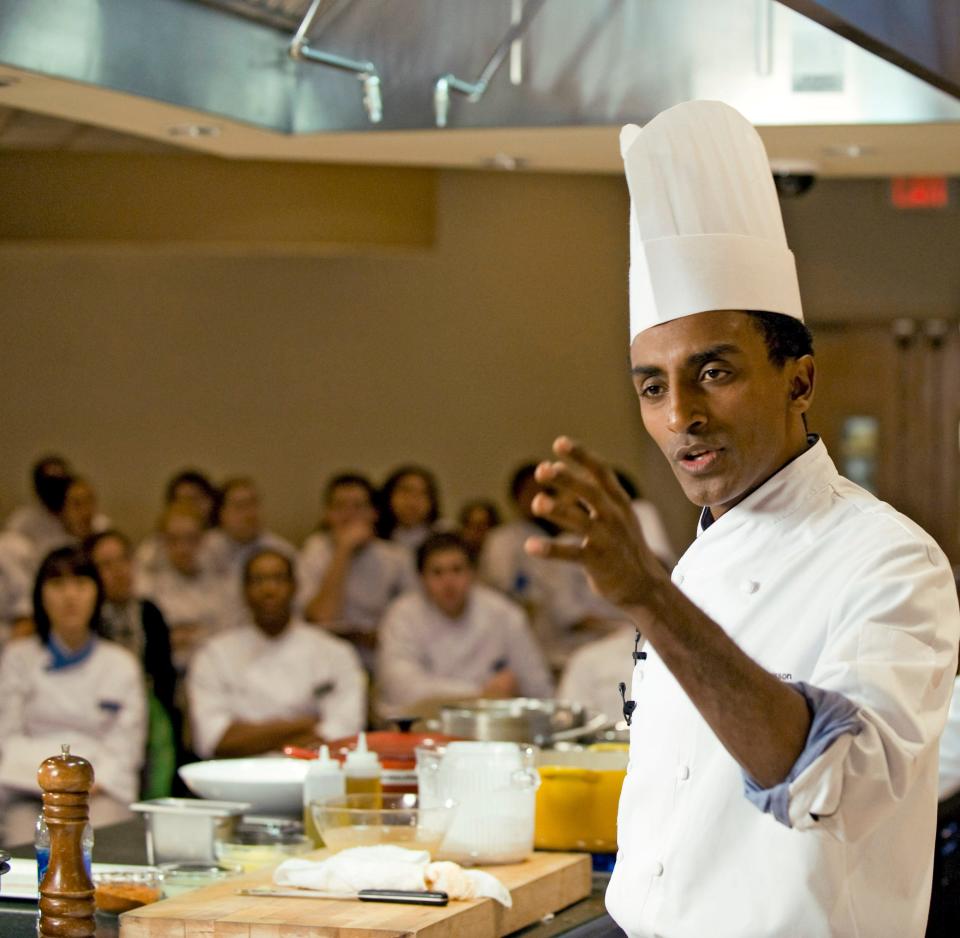
The school’s founders, Gertrude I. Johnson and Mary T. Wales, were seeking new leaders for the small business school they opened in 1914. In 1947, Edward Triangelo and J.W. "Morris" Gaebe bought the school. Triangelo was the college's first president, serving when it became accredited in 1954 and when Rhode Island granted a charter that authorized the university to operate as a nonprofit institution of higher learning. The degrees they awarded included accounting and business administration.
Gaebe served as president from 1969 to 1989. In the early 1970s, he tried selling his board of directors on adding a culinary arts major. They voted against it.
"It's such a nice little business school, one told him — why do you want to teach cooks?" is what he told The Journal's Mark Patinkin. The next year, Gaebe tried again and got the votes.
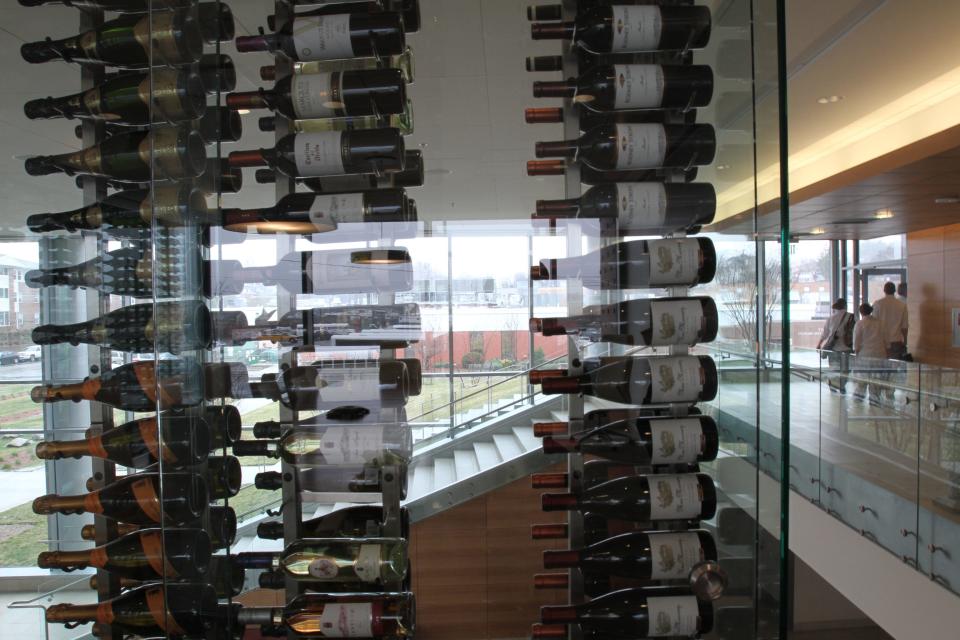
Gaebe couldn't have imagined then how food and dining would trend at the start of the 21st century. Who was to know that chefs would become the new rock stars for a generation? At the Charlotte campus, which opened in 2004, students can take food media courses that teach them how to cook in front of a camera and use video for the Instagrammable world of today.
They started with cooking classes
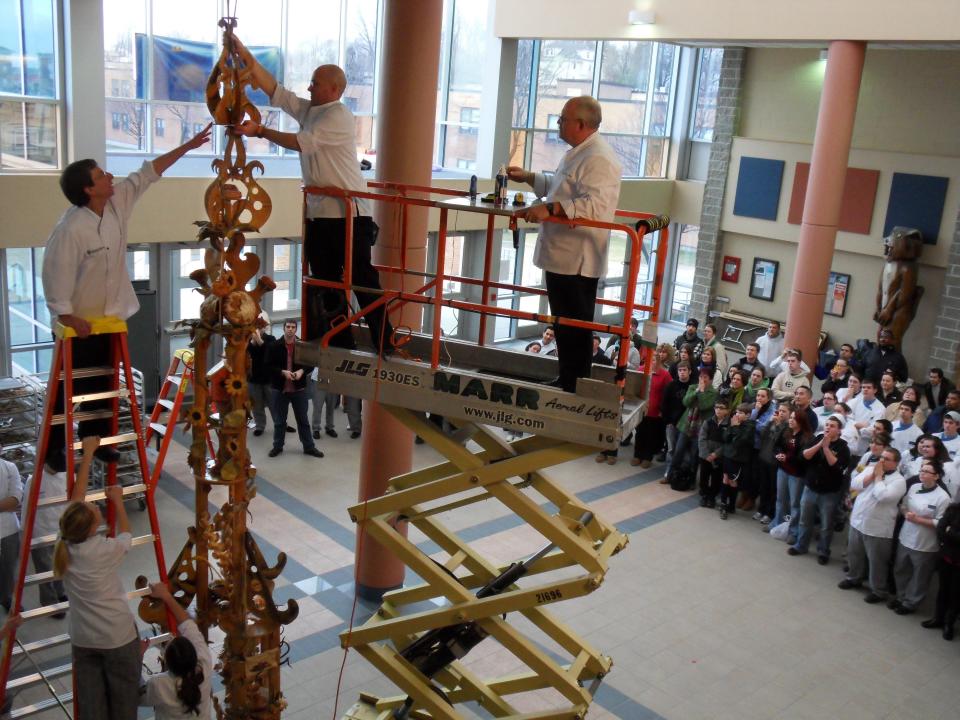
Over the years, students have learned from professors who are tops in their fields, including bread art baker Ciril Hitz, pastry chef and author Mitch Stamm and national pizza expert and award-winning cookbook author Peter Reinhart.
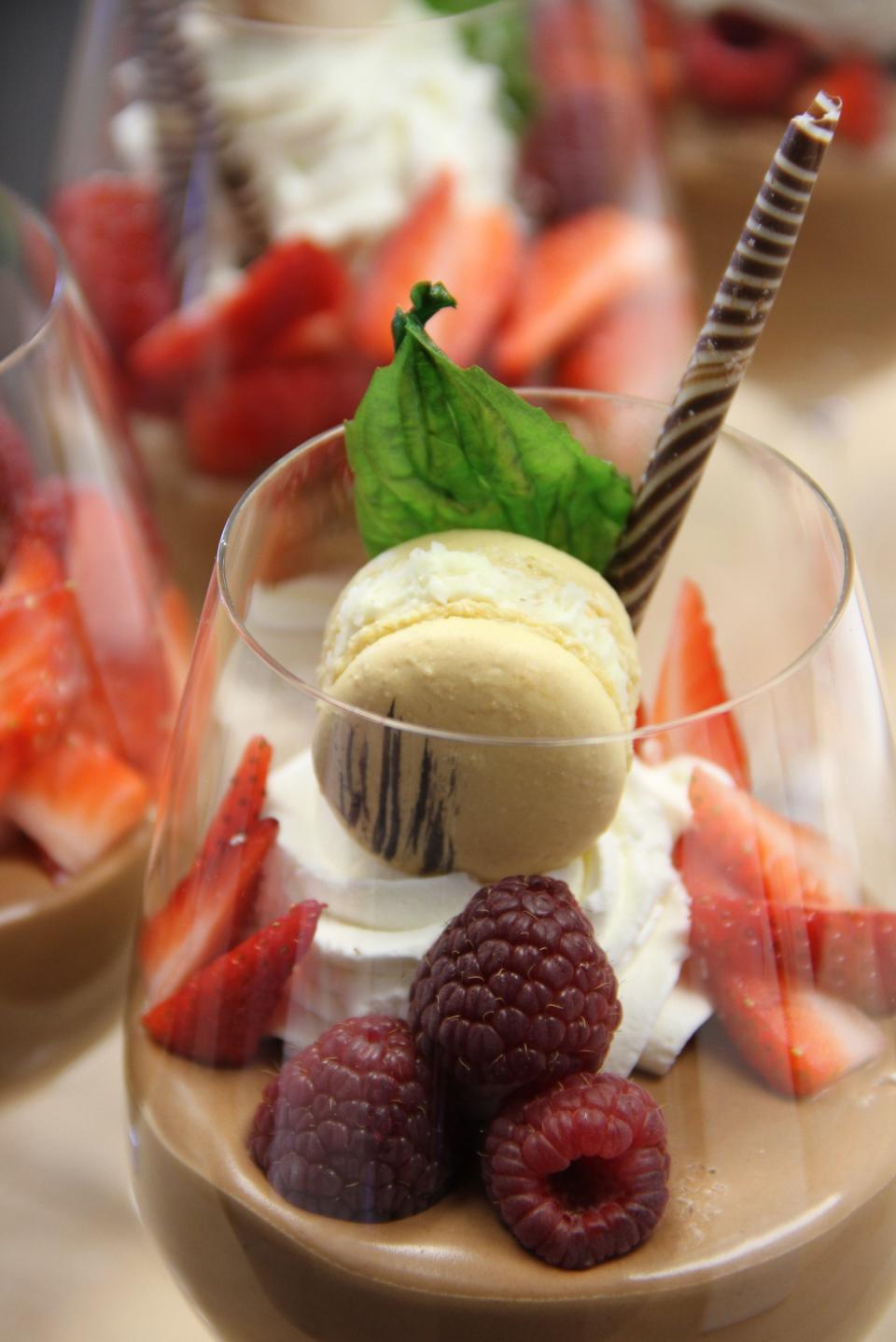
They had special sessions with celebrity chefs who delivered Distinguished Visiting Lectures, including Marcus Samuelsson and Jacques Pepin. They studied techniques in kitchens and did coursework for English, science and more in classrooms. They have had expert training in wine education, beer-making and cocktail culture. They got practical training at university-owned hotels and restaurants in Warwick and Seekonk for many years, but no more.
Always, the students have dressed in their white chef coats, pressed and ready to go, trained in discipline for teamwork.
The program got a stunning new home when the Cuisinart Center for Culinary Excellence opened on the Harborside Campus in 2011.
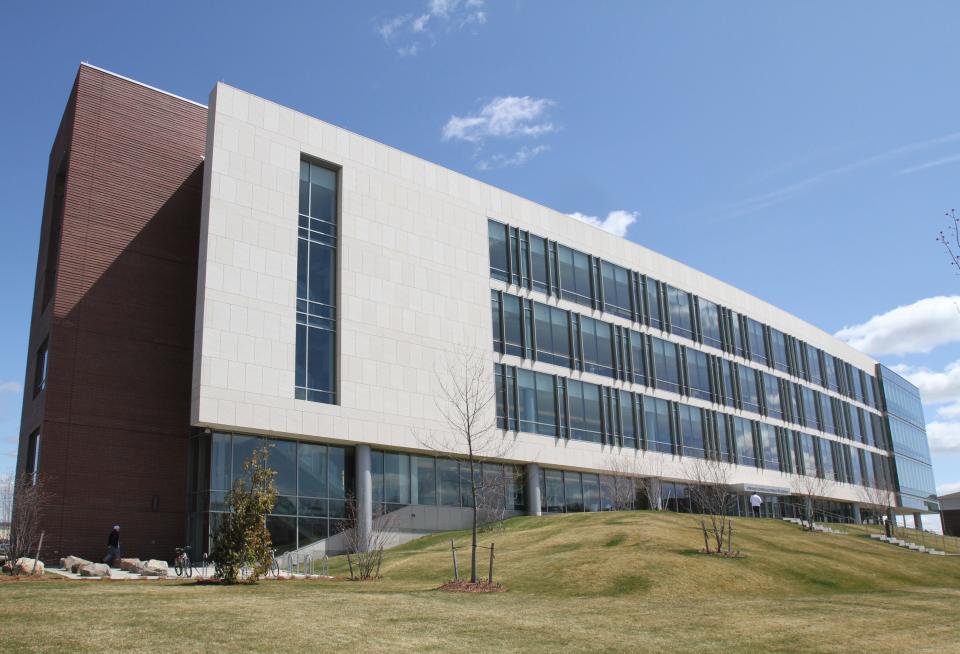
In 2012, JWU created a new educational campaign, "Changing the Way America Eats." Students could concentrate their studies in Wellness and Sustainability. Classes called Plant-based Cuisine, Farm to Table Desserts and Conscious Cuisine were all in line with popular culinary movements.
The world, too, was moving toward a diet based on seasonal local food and away from industrialized food. These new courses met the needs of students, as well as those of diners and the food community. True to the comments of William Idell, then department chairman for Culinary Arts, "This is not a trend. It's got staying power."
A new era in innovation
In 2021, JWU took another leap, updating culinary arts by creating the College of Food Innovation & Technology. It wasn't just the name that grew. So did the mission. Now students would be exposed to the world of food systems — sustainable, economic, agricultural and nonprofit among them.
It's all about educating big thinkers, said Jason R. Evans, the first dean of the College of Food Innovation & Technology.

"We are looking for ways to enhance the way students think of food," he said. "There is so much opportunity to bring solutions to problems that are really profitable."
The program graduates many who are working as research chefs and culinologists. Their work is not just to create tasty, less-processed foods, but also to make food that is more nutritious, accessible and ecologically sound, Evans said. Think the Impossible Burger and fortified beverages.
He predicts that the number of grads in those jobs will rival how many chefs are produced at the school.
Since his arrival, the Food Innovation and Design Lab was relaunched for external work. They do fee-based product development. For example, they get new product samples and determine if they are safe and shelf-stable. Other jobs relate to creating sustainable products for a seafood company seeking to use underutilized items such as propeller clams.
Evans explained that they build faculty teams to work on these projects. But the concepts spill into the classrooms, he said.
Mission-driven
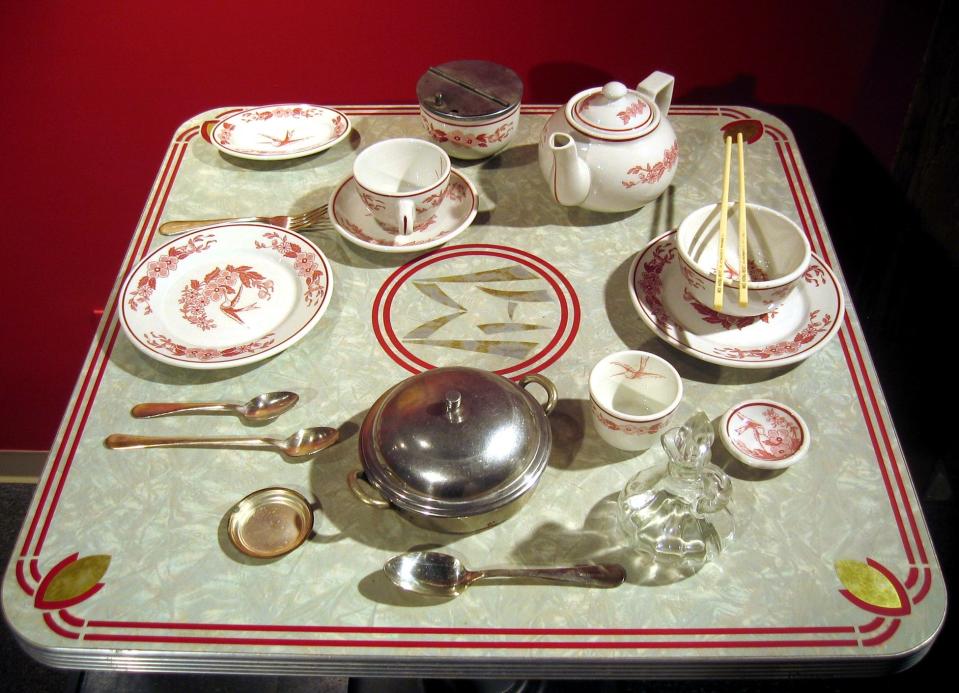
Evans sees another new mission. He wants to give food professionals the tools to affect the food system, one many see as broken. Not only are many modern health issues considered diet-related, there is concern that producing our food damages the planet.
"This generation feels the crisis tangibly and they believe there are things around the globe that have to change," Evans said. "We want to build on that energy, through food."
The biggest foods in the smallest state: 7 giant foods you can eat in Rhode Island
He talked about another energy, and that is the city of Providence.
"I've never lived in a place with such a dense and intense restaurant scene," he said.
"That culture affects our students," he said. Living in this environment, they believe that with the right concept, they can create anything.
This article originally appeared on The Providence Journal: Johnson & Wales University transformed RI food landscape for 50 years

